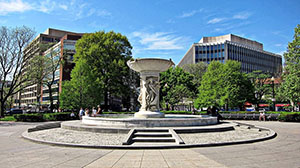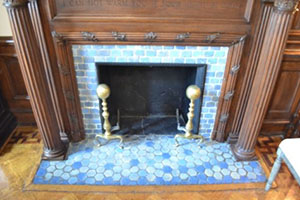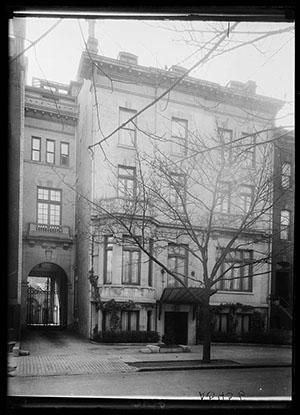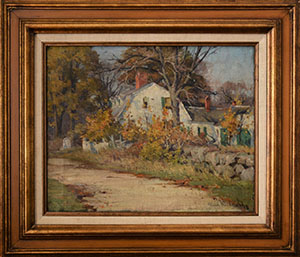|
Winter 2022
WHRC COMMITTEE & STAFF
Chairman: Hope Royer
Committee Members: Mary Baird, Carolyn Forbes
International President: Marian St.Clair
National Women’s History Project
By Mary Baird, WHRC Committee Member
The National Women’s History Project (NWHP), founded as a grassroots organization in 1980 in Santa Rosa, California, has grown into a national organization that has written women back into our history. Today, NWHA is known nationally as the only clearinghouse providing information and training in multicultural women’s history for educators, community organizations, and for anyone wanting to expand their understanding of women’s contributions to U.S. history.
As late as 1994, a study found that the content of some history textbooks contained as little as 3% information about women. Girls had few role models to emulate and there was a general assumption that women’s history fit mainly within the context of family and domestic roles. The goal of NWHP has been to change people’s perception and to convince Congress and the White House that our nation would benefit from celebrating and recognizing women’s importance in history on an annual basis.
In 1980, President Carter issued the first Presidential Proclamation declaring the week of March 8 as National Women’s History Week, stating, “From the first settlers who came to our shores, from the first American Indian families who befriended them, men and women have worked together to build this nation. Too often the women were unsung and sometimes their contributions went unnoticed. But the achievements, leadership, courage, strength, and love of the women who built America was as vital as that of the men whose names we know so well.”
Within a few years thousands of schools and communities were celebrating National Women’s History Week, supported and encouraged by resolutions from governors, city councils, school boards, and the U.S. Congress. The week was dedicated to recognizing, honoring, and celebrating the achievements of women.
In 1987, Congress declared March as National Women’s History Month. Each year, NWHP chooses an annual theme to promote a multicultural women’s history perspective and honors women of diverse cultural, ethnic, occupational, and racial backgrounds. Past honorees have included Maya Angelou, Shirley Chisholm, Hillary Rodham Clinton, Ruth Bader Ginsburg, Jane Goodall, Billie Jean King, and Gerda Lerner, to name just a few.
The NWHA has an extensive selection of women’s history materials and educational resources, and it has been nationally recognized for its groundbreaking work in education and programs. The organization is retelling history and changing the future. They believe that knowing women’s history gives everyone the power and inspiration to succeed.
Women Providing Healing, Promoting Hope
By Carolyn Forbes, WHRC Committee Member

The National Women’s History Alliance has announced its 2022 theme for National Women’s History Month: Women Providing Healing, Promoting Hope. The theme is both a tribute to the ceaseless work of caregivers and frontline workers during this ongoing pandemic and a recognition of the thousands of ways women of all cultures have provided both healing and hope throughout history.
The theme recognizes the many ways in which GFWC women have provided healing and promoted hope since 1890. A few highlights include:
- In 1907, when tuberculosis was a leading cause of death in America, GFWC clubs in Kansas mobilized residents in local communities to attend a traveling tuberculosis exhibit that educated them on how to reduce the spread of the disease, ultimately saving lives. Dr. J. Crumbine of the Kansas State Board of Health praised GFWC clubs by remarking that “we find that GFWC clubs lend their influence and their time toward making the exhibit a success.”
- In 1945, GFWC club members came together to rush life-saving CARE (Cooperative for America Relief Everywhere) packages to survivors of World War II. International interests were served through the continuing GFWC/CARE program designed to educate and involve clubwomen in promoting healthcare for people around the world with a focus on women in developing countries.
- In 2020, GFWC club members held marches and rallies that increased public awareness and educated Americans on the decades-long struggle of suffragists to secure a women’s right to vote 100 years ago. Club members from across the country donned suffragists attire, carried GFWC banners, and wore the yellow rose, a symbol of the deciding vote for the passage of the 19th Amendment securing women’s equality under the law.
The knowledge of how GFWC clubwomen have shaped our society expands our understanding of what is possible, and the GFWC role models of yesterday and today inspire members to contribute and to achieve great things.
Clubs should consider how to honor the contributions of our role models, club members, and community leaders. Perhaps share success stories at club meetings or start each meeting with a “moment in time” that showcases an important accomplishment in GFWC history. Or, consider holding a club “awards ceremony,” where members are honored for their contributions in all areas of club work. Celebrating members’ contributions boosts self-confidence and motivates them to achieve even more.
Take time to celebrate Women’s History Month in your club. It provides a platform that brings attention to the incredible things GFWC clubwomen have accomplished, honors those who came before us, and highlights the amazing things we are doing today.
Dupont Circle: The Gilded Age
By Hope Royer, WHRC Committee Chairman

By 1895, at the height of the Gilded Age, the Dupont Circle community had become a neighborhood of grand homes for society’s elite. It was, without dispute, Washington’s center of wealth, power, and status.
Not to be confused with the new Julian Fellowes’ HBO series of the same title, the term Gilded Age was coined by Mark Twain in one of his less well known novels The Gilded Age: A Tale of Today (1873), a satire on materialism and political corruption. Twain’s term referred to a period of economic boom in American society, which began after the American Civil War and ended at the turn of the century. It was applied to the era by historians in the 1920s. The Gilded Age (1870’s-1900) was characterized by rapid economic growth and conspicuous wealth, providing a mask for problems, such as poverty, inequality, and social injustice.
In Chapter 24 of his 1873 novel, Twain provides the reader with a “virtual tour” of several Washington landmarks including The White House, Treasury Building, Washington Monument, and the Capital Building. His comments on the weather in Washington may ring true still today:
“When you arrived it was snowing. When you reached the hotel, it was sleeting. When you went to bed, it was raining. During the night it froze hard, and the wind blew some chimneys down. When you got up in the morning, it was foggy. When you finished your breakfast at ten o’clock and went out, the sunshine was brilliant, the weather balmy and delicious, and the mud and slush deep and all-pervading. You will like the climate—when you get used to it. You naturally wish to few (view) the city: so you take an umbrella, an overcoat, and a fan, and go forth…”
1734 N Street Northwest 1908-1921: John Jay White and Grace Hoffman White
By Hope Royer, WHRC Committee Chairman
In 1908, New York City banker John Jay White (1860-1923) and his wife, Virginia Grace Hoffman White (1862-1937), purchased the home at 1734 N Street, NW, from its third owner, General Nelson A. Miles. The Whites sought to remodel the building into a “modern” residence. Shortly after the purchase, they hired well known New York architects Denby & Nute to transform the traditional façade to a more fashionable Edwardian design. Although no images of the original exterior exist, the home is likely to have looked much like other brownstones in its Dupont Circle neighborhood. Denby & Nute completely reconstructed the front from the first floor to the second floor, removing the original exterior stairway, enlarging the windows, adding limestone facing, and erecting a grand marquis over the new main entrance.

The Whites also modernized the home’s interior, constructing a grand staircase to lead visitors from the home’s new first floor entrance to a more open and elegant second floor. The drawing room may be considered to be the most impressive room in the mansion. Mr. White was a well-known traveler, collector of Native American artifacts, and big game hunter who brought trophies to the house from expeditions with former President Theodore Roosevelt. Some of the décor may have been a reflection of Mr. White’s interest in exotic animals. The painted wall canvasses in the Drawing Room were commissioned by the Whites and were painted by Albert Herter. Although he was an easel painter who concentrated on portraits and still-life paintings, Herter was dedicated to mural painting, a specialization he began early in his career.
Grace Hoffman White, the daughter of West African missionaries, was a suffragist, peace activist, and writer. After her husband John’s death, she contributed more than 200 Native American artifacts from his collection to the Smithsonian and the National Museum of the American Indian.

During the White’s ownership of 1734 N Street, NW, Grace began to incorporate the new “arts and crafts style” into the home’s décor. Proponents of the Arts and Crafts Movement preferred handmade items to machinery made pieces. The tile and basket weave lattice in the Solarium are examples of Grace Hoffman Whites’ arts and crafts influence found throughout the home. The Solarium tile and the tiling around the fireplaces in the Music Room and Dining Room were made by hand at the Moravian Pottery and Tile Works in Doylestown, Pennsylvania. Henry Chapman Mercer (1856-1930) began producing tiles at a small workshop on the outskirts of Doylestown, Pennsylvania, in 1898. The Moravian Pottery and Tile Works has been open to the public since 1912. The fascinating history of the pottery and the opportunity to see tiles being made today make it a must-visit destination in Bucks County.

The Whites maintained their home at 1734 N Street, NW, after taking up residence with their daughter in Santa Barbara, California, at the start of World War I. They leased the home to Uruguay for its diplomatic minister during World War I and, for several months following the War, to the Czechoslovakian Legation as the official headquarters of the Czechoslovakian diplomatic minister.
GFWC’s purchase in 1922 of the White’s stone and brick, five story mansion at 1734 N Street, NW, ended the Federation’s search for a suitable headquarters building in our nation’s capital.
“From Coca-Cola House to Clubhouse”
The Armstrong Mauldin House: Woman’s Club of Rock Hill, GFWC South Carolina
By Hope Royer, WHRC Committee Chairman
With heartfelt appreciation to Marlene Milstead and Ellen Mayes, Past Presidents of the Woman’s Club of Rock Hill, and to Shannon Smith, President.
The WHRC Committee is pleased to continue, in this winter issue, its “series” of articles featuring historic homes owned and maintained by individual clubs and State Federations. The vital role that each of these homes plays in its community becomes more apparent with each article. Not only are they locations for year-round public and private community events, they are visible reminders of the importance of historic preservation. Please consider sharing information on your club or State Federation home for inclusion in the spring issue. Contact Committee Chairman Hope Royer at hoperoyer@aol.com for details.

The two-story home of Spanish and American Colonial style at 607 Aiken Avenue was built in 1921 by renowned, regional architect A.D. Gilchrist for Rock Hill Mayor, W.R. Armstrong. Design characteristics of the 4,000-square-foot home include a low-pitched roof, clay roof tiles, a square, symmetrical façade, and surface decorations in low relief.
Local business man William M. Mauldin purchased the home for his family in 1923. The house was known briefly as the “Coca-Cola House.” Mauldin had purchased the Rock Hill Coca-Cola Plant in 1908 and, with it, the exclusive right to bottle and sell Coca-Cola to customers in Rock Hill and the surrounding counties. The Rock Hill Coca-Cola Bottling Company continues as a family business and is widely respected for its community-wide charitable giving. The Mauldins built a second, smaller house in 1939 on what was then the back portion of their large lot. The two residences formed a “complex” familiar to southern tradition of earlier times in which a smaller home was constructed as an adjunct to the larger, stately family home. As adults, two of the children and their families lived in the smaller house, in turn, from 1940 to 1963. The home remained in the Mauldin family until 1969, when the widowed Mayme Mauldin died.
The Woman’s Club of Rock Hill purchased the Armstrong-Mauldin House in 1971 from Mauldin daughter, Ann Bruce, for use as its clubhouse. The house was placed on the National Register of Historic Places as a contributing property in the Charlotte Avenue/Aiken Avenue Historic District in 1992.
The Armstrong-Mauldin House is used by the club for its monthly general club meetings, board and committee meetings, and for club sponsored community events and fundraising events. It is also rented to club members and to the public for small meetings, weddings, showers, and other special occasions. As is true in most club houses, other than lawn care and major system services, all maintenance and administrative work is done by members and the continued support of several husbands.
Club members organized a Designer Showhouse in 2002 to raise funds for much needed improvements, new appliances, interior and exterior painting, and landscaping immediately surrounding the clubhouse. Eighteen interior designers and 11 landscapers were involved in preparation for the 17-day house tour, which was open to the public and featured a café and gift shop.

In 2010, the club undertook the restoration of the original 1930’s gardens developed by the Mauldin family, specifically Mayme Mauldin. Restoration work included unearthing brick walks, excavation and restoration of the lily pond and reflecting pool, addition of heritage and modern plants, and construction of a replica of the original garden pergola. The gardens were chosen by the national Garden Conservancy for inclusion in its Open Days program, which opens exceptional gardens to the public for tours. It was the only one in South Carolina chosen in 2010. The gardens were named to the list of South Carolina Historic Gardens by the South Carolina Historic Gardens Initiative in 2013.
The Armstrong-Mauldin House and gardens are maintained with proceeds from rentals and club fundraising events held in conjunction with annual Rock Hill community-wide events. The membership hosts three Victorian Tea and Sugar Plum Boutique events in early December during Rock Hill’s regional winter festival, ChristmasVille. Guests enjoy savories, scones, and sweets prepared by members. The annual Monarch and Milkweed Seminar and Butterfly Release is held during Rock Hill’s spring festival Come-See-Me. Seeds from Milkweed grown in the Armstrong-Mauldin Gardens are harvested and distributed to seminar participants. An avid community supporter of saving the Monarchs visits the annual Seminar in costume each year.
Club programs open to the public include monthly meetings of the Junta Literary Society and occasional Tea & Topics gatherings. Named after Benjamin Franklin’s book club, the Junta Literary Society meets for lunch to exchange and discuss books. Tea &Topics gatherings are scheduled outside of regular programs to take advantage of special opportunities to recognize community members.
The Woman’s Club of Rock Hill has been recognized by its community and the State of South Carolina for its efforts in historic restoration and preservation. On June 11, 2014, the Woman’s Club of Rock Hill was presented with a Historic Preservation Stewardship Award by The Palmetto Trust, South Carolina Department of History and Archive, and the Office of the Governor. The presentation was made by Governor Haley at the Statehouse.
The Woman’s Club of Rock Hill presented a workshop on garden restoration at GFWC’s Annual Convention in Charlotte, North Carolina, in June 2012. During the Convention, the woman’s club hosted almost 50 clubwomen from around the country for a tour of its Armstrong-Mauldin clubhouse and gardens. A luncheon buffet of southern refreshments was served. Beverage of choice? Coca-Cola.
Arts, Culture, and the Clubwoman
By Marian St.Clair, GFWC International President

Many of the paintings donated to GFWC by State Federations in the years following the purchase of Headquarters in Washington, DC, powerfully portray the various types of homes and landscapes found across our country.
One that has always tugged at my heartstrings for its down-home warmth is a side view of a white, two-story Dutch Colonial featuring a gambrel roof and a one-story back extension. In the foreground, a sturdy rock wall stands between a sandy, unpaved road and a tree-filled garden. The leaves of a massive tulip poplar have been whisked away by the wind, but smaller trees near the roadway and a fringe of tall grasses gleam yellow and gold in the brilliant autumn sunshine.
I am drawn to the painting for other reasons too. GFWC’s collection of regional art developed when landscape paintings of American Impressionism, like this one, were peaking in popularity. The impressionists’ use of bright colors, their fascination with light and shadows, and their quickly made, short, thick strokes of paint that coalesce into charming images have always captivated me.
Perhaps best of all, the painting is attributed to a GFWC clubwoman, Mabel M. Woodward (1877-1945), who served as the Department of Fine Arts Chairman of Rhode Island State Federation of Women’s Clubs. A 2009 GFWC publication identifies the painting as “Homestead,” but a brass plaque on the reverse of the frame is inscribed:
Presented by
R.I.S.F.W.C
In Memory of SARAH E. DOYLE of Providence R.I
A PIONEER IN THE G.F.W.C.
*******
FRUIT HILL R.I.
Painted by
Mabel M. Woodward
Chairman Dept. Fine Arts, R.I.
Fruit Hill is a quiet, tree-lined neighborhood in northwest Providence that adjoins Rhode Island College. The southern end of Fruit Hill Avenue, near the Woonasquatucket River, includes many older 18th and 19th century homes. The neighborhood became especially popular after the Civil War, when it was served by a streetcar line.
Woodward, known as one of Rhode Island’s most renowned American Impressionist painters, primarily portrayed beaches, landscapes, and harbors in and around Providence, RI. Her works can be found in the Rhode Island School of Design Museum and the collection of the Providence Art Club, where she served as the first woman president.
Woodward was born in Providence in 1877 to an affluent family that provided her with the best domestic art education possible. She graduated with highest honors from the Rhode Island School of Design before attending the Art Students League of New York, where she studied under impressionist William Merritt Chase and other important painters, muralists, and illustrators.
In 1990, Mable returned to Providence where she taught at the Rhode Island School of Design for more than 20 years. In the summer months she painted, sometimes traveling to France, Italy, or the Netherlands, but more often visiting Ogunquit, Maine, where she portrayed shorelines, harbors, and beaches, along with an art school friend, Anne Carleton.
Woodward was one of the best-known artists in her home state in the 1920s and 1930s, but faded from prominence with the rise of post-impressionism and abstract-impressionism. She was relatively unknown by the time of her death in 1945, but when interest in American Impressionists revived in the last decades of the 20th century, her work began to be rediscovered.
In 1972, the Boston Globe noted that Woodward was included in a Boston exhibition of “neglected American Impressionists,” and later, in 1992, she was featured in a retrospective exhibition at the Providence Art Club.
Despite the episodic rise and fall of fortunes, I believe that Woodward’s depiction of Fruit Hill will always claim a special place at GFWC as “one of our own.” |